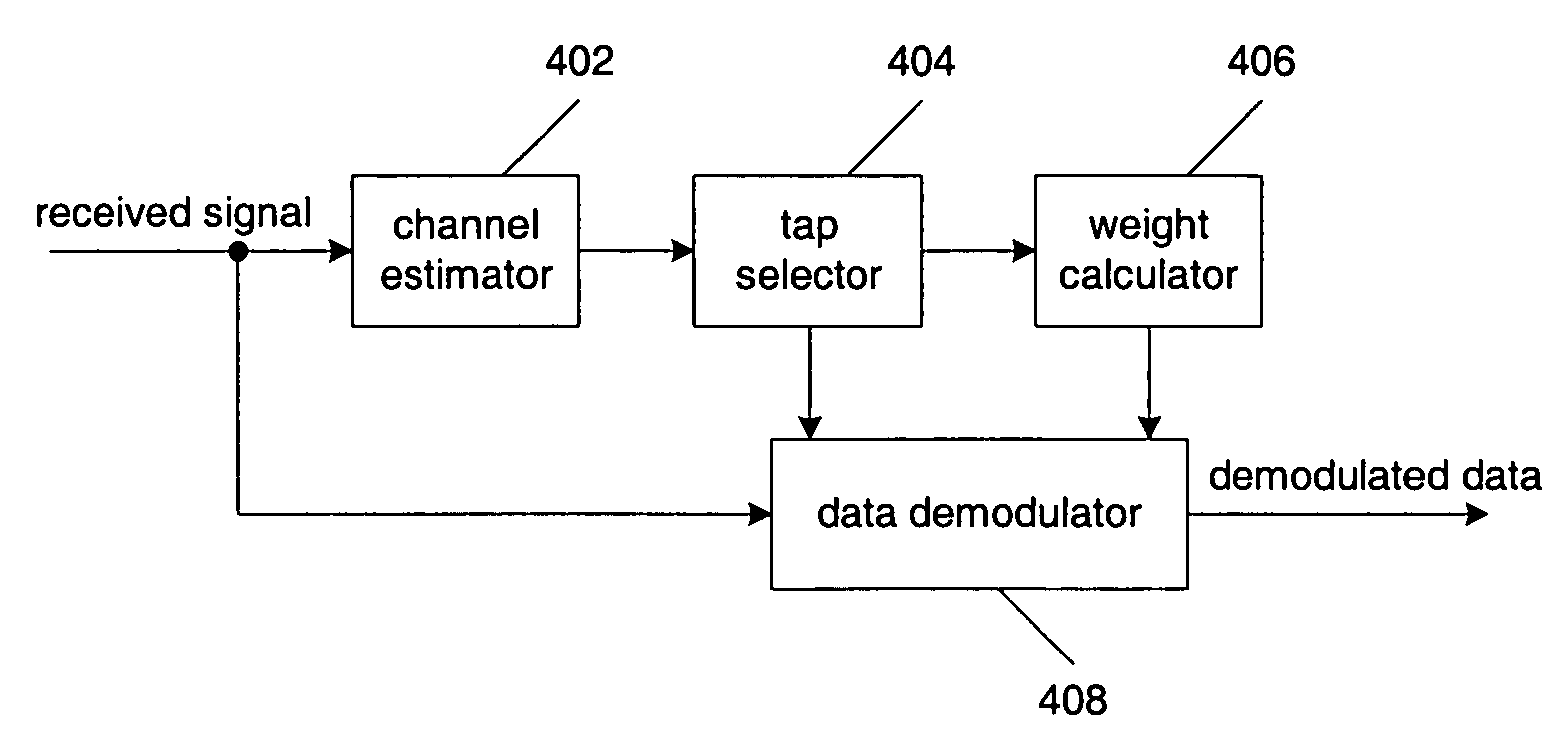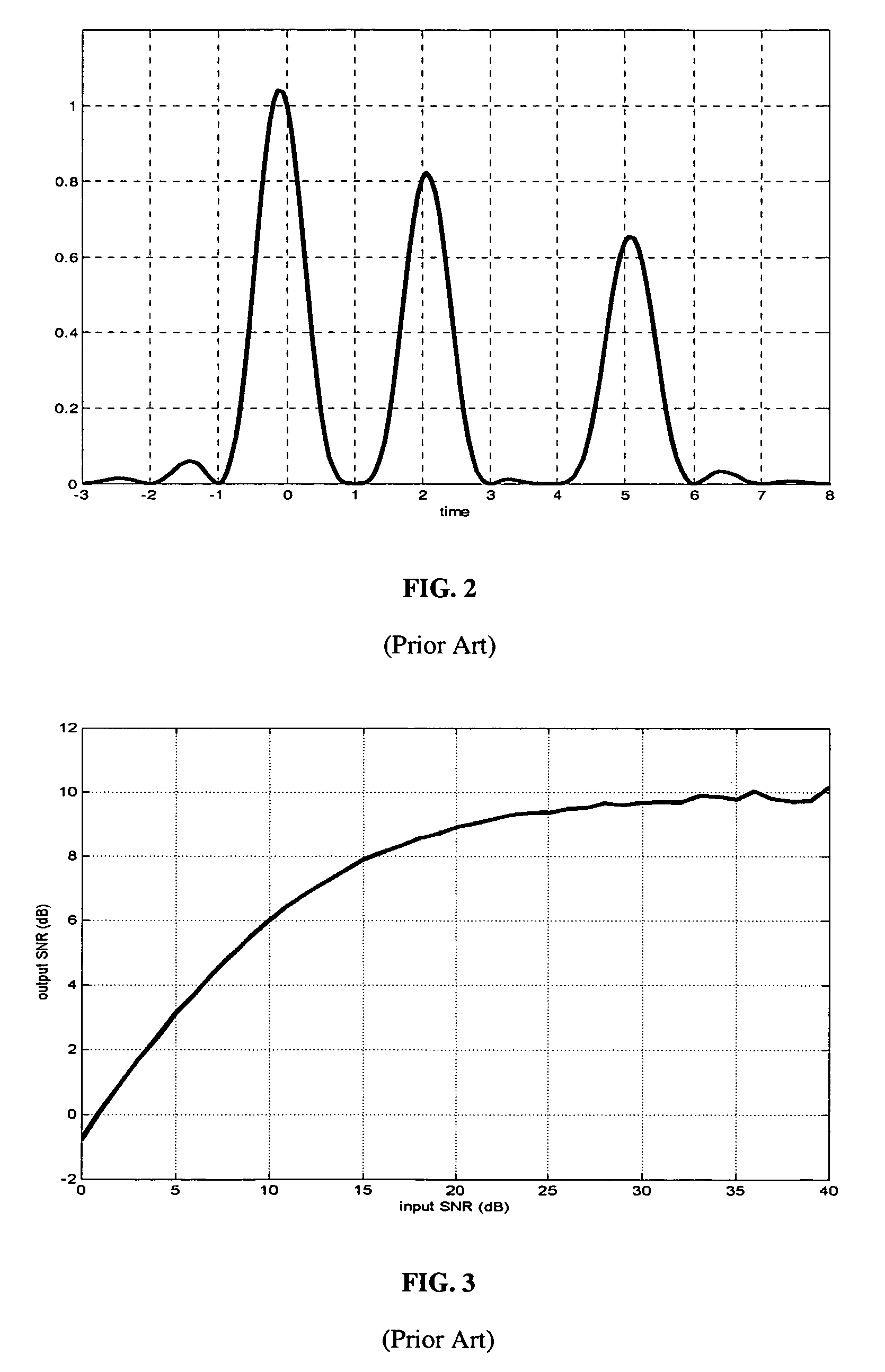LMMSE-based RAKE receiver with channel tap assignment
a technology of rake receiver and channel tap, which is applied in the direction of baseband system details, transmission monitoring, amplitude demodulation, etc., can solve the problems of inability to accurately determine the location and complex amplitude of the receiver, significant performance degradation, and inability to achieve optimal search
- Summary
- Abstract
- Description
- Claims
- Application Information
AI Technical Summary
Benefits of technology
Problems solved by technology
Method used
Image
Examples
Embodiment Construction
[0051]The present invention relates to the receiver design in communications systems. In a communications system, the receiver has means of estimating the composite CIR h(t). For example, in a wireless CDMA system, h(t) can be estimated from a pilot channel. It should be noted that estimating the composite CIR is entirely different from the multipath-based channel estimation used in conventional rake and G-rake receivers.
[0052]In conventional rake and G-rake receivers, channel estimation comprises multiple steps. First, the path searcher in the receiver searches for multipaths, generally at lower sampling rate, e.g., at 1× or 2× oversampling, in order to reduce the computation and power consumption. Once a multipath (finger) is detected at certain location, the tracker in the receiver will further refine the location of that multipath at higher sampling rate, e.g., 4× or 8×. The tracker is also responsible to estimate the complex amplitude of the multipath. Finally, since the locati...
PUM
 Login to View More
Login to View More Abstract
Description
Claims
Application Information
 Login to View More
Login to View More - R&D
- Intellectual Property
- Life Sciences
- Materials
- Tech Scout
- Unparalleled Data Quality
- Higher Quality Content
- 60% Fewer Hallucinations
Browse by: Latest US Patents, China's latest patents, Technical Efficacy Thesaurus, Application Domain, Technology Topic, Popular Technical Reports.
© 2025 PatSnap. All rights reserved.Legal|Privacy policy|Modern Slavery Act Transparency Statement|Sitemap|About US| Contact US: help@patsnap.com



